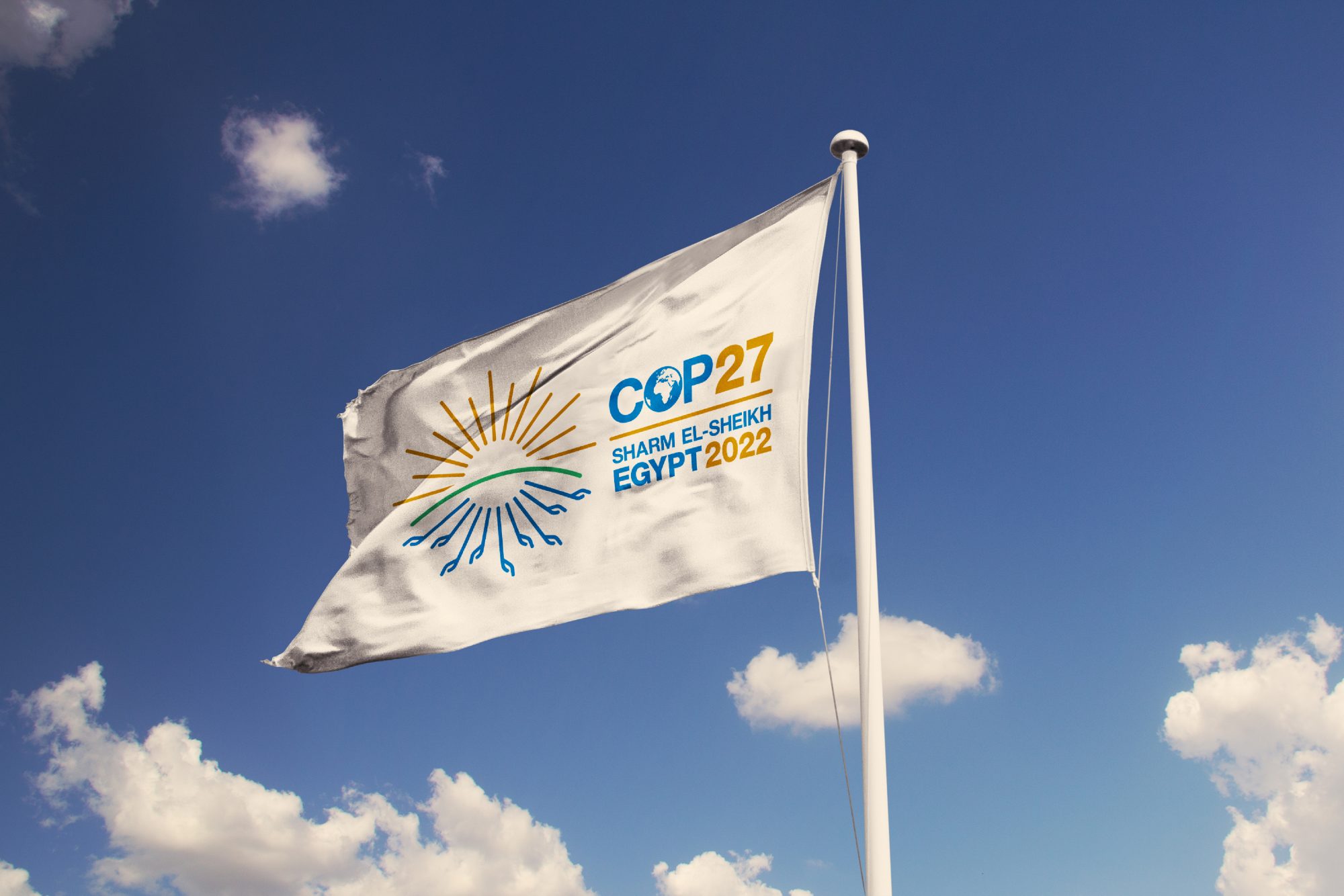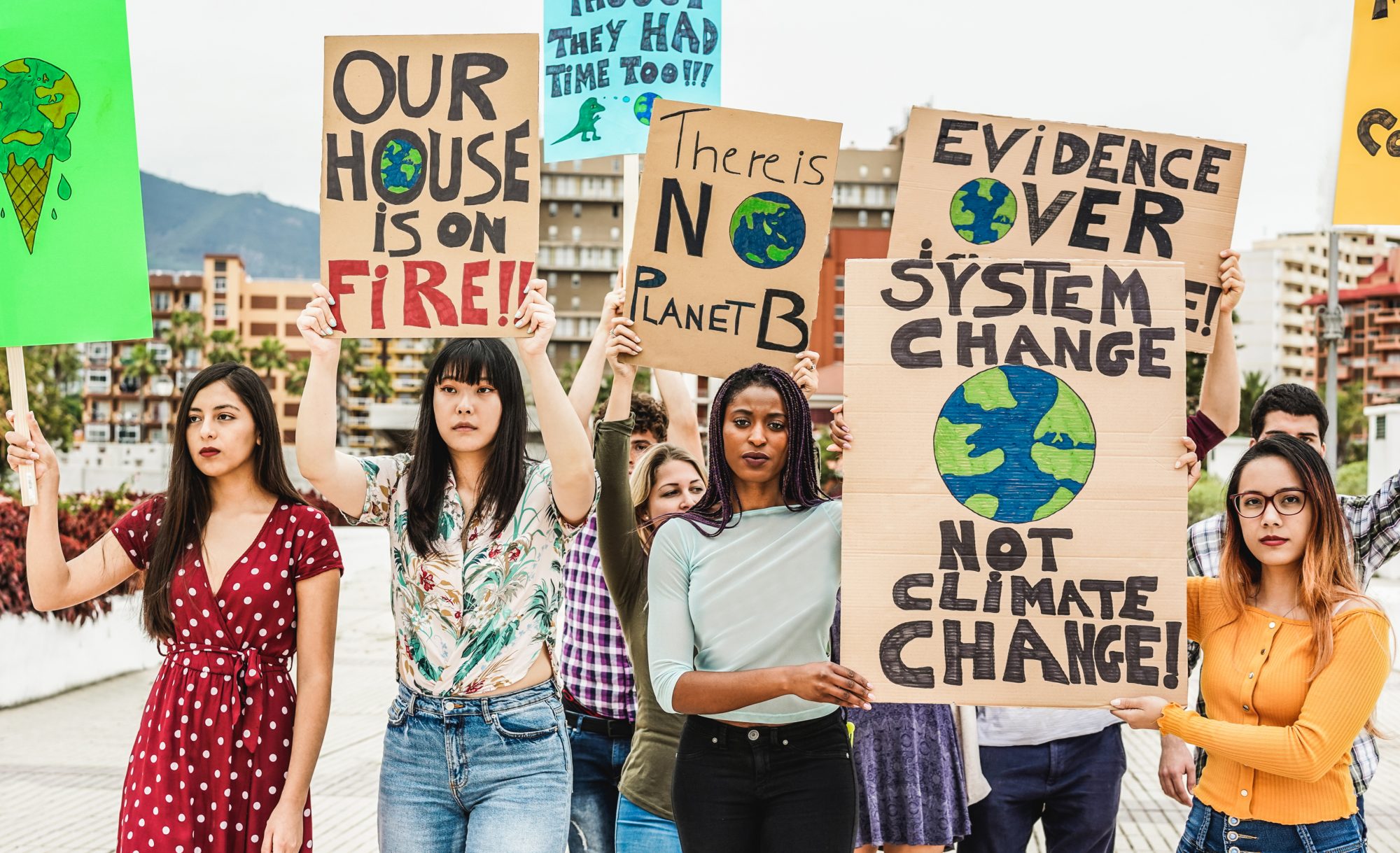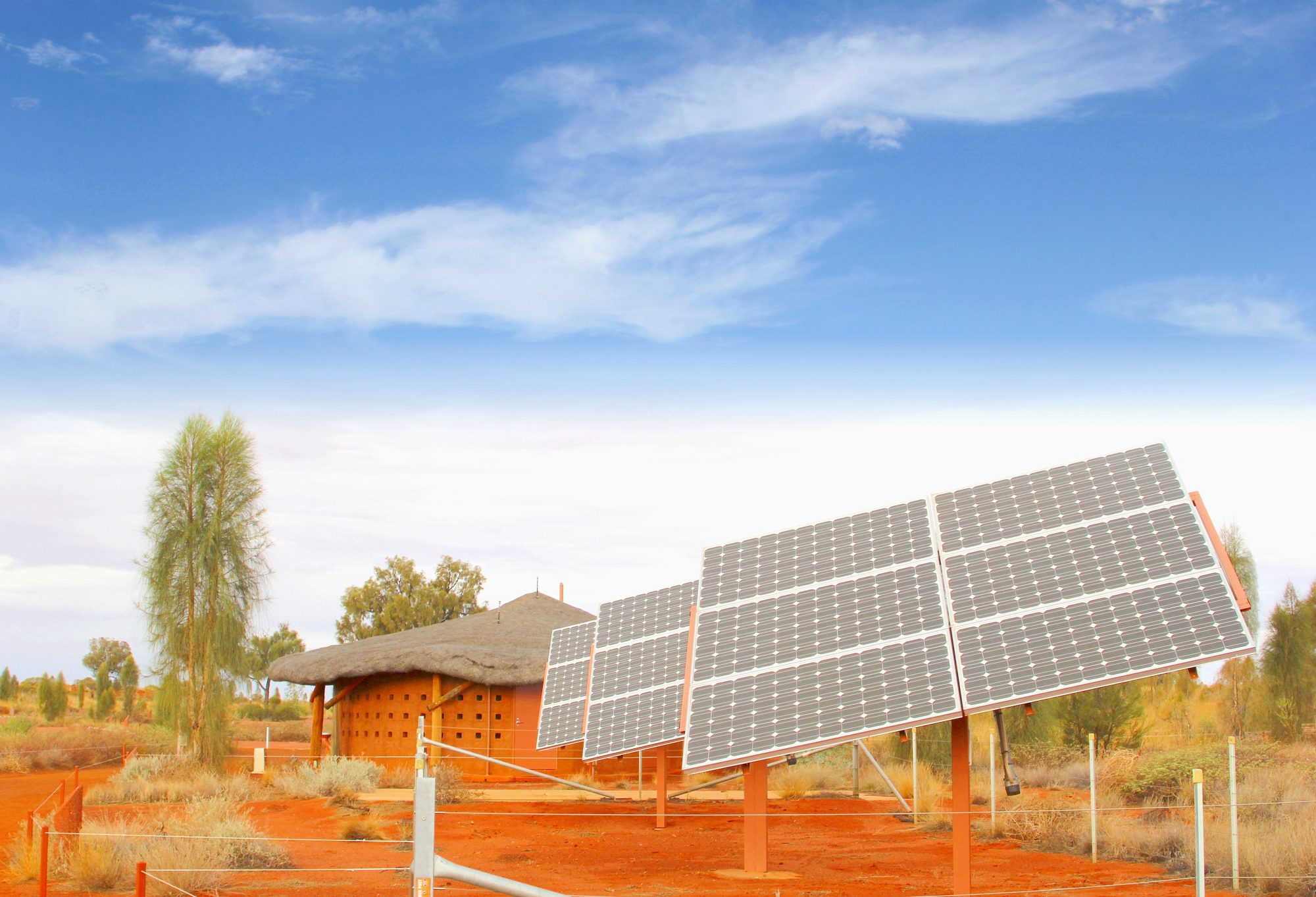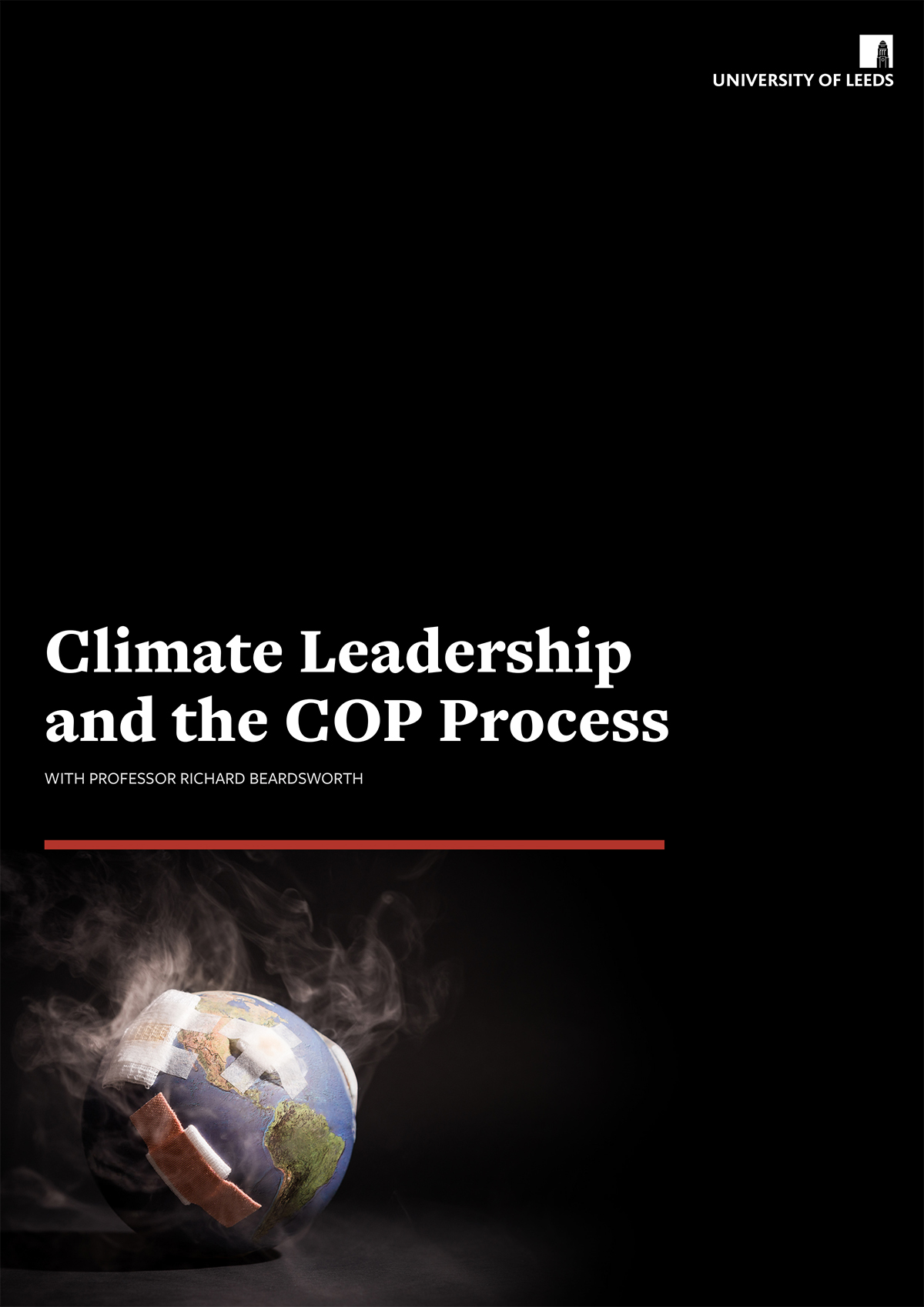For many countries in the South, climate leadership has become increasingly necessary by the day, as the effects of the climate crisis are happening too fast for the globally proposed 45% average reduction of greenhouse gases by 2030
Over the summer of 2022, the highest-ever recorded temperatures were met on three continents: North America, Europe, and Asia. Following a severe heatwave in March, monsoon flooding in Pakistan covered one-third of the country by late August, with an estimated 1,700 deaths, 13,000 injured, over 2 million people left homeless, and $30-40 billion in damages. This year, climate change became, literally, a global climate crisis, with the accelerating impact on the more vulnerable countries now evident at scale.
The one co-ordinating process that the world has at the international level is the United Nations Framework Convention on Climate Change (UNFCCC), within which there are two outstanding moments: the six-year assessment reports from the Intergovernmental Panel on Climate Change (IPCC) and the annual Conference of the Parties (COPs). Whatever one’s stance towards this co- ordinating process—and notwithstanding the important array of climate actors now gathered around this process (international organizations, cities, business, civil society, youth, etc.)—it is within this process that climate leadership is primarily required. Without effective, comprehensive government action at both national and international levels, the science-based targets of an average 45% reduction of greenhouse gases (GHG) by 2030 and net zero by 2050 are out of reach.

In this difficult context, my question is this: What is the present situation of climate leadership by states, and where lies the future direction of travel? Too large a question to answer without focus, I consider here: 1) the present international environment in which the COP process is set; 2) current responses to this environment and the climate agenda (my examples are, for reasons that will become clear, the EU and Egypt); 3) what kinds of climate leadership are therefore being offered, and 4) the implications for this November’s COP27 in Egypt and the UNFCCC process in general.
International Environment
The climate agenda is clear. The Paris Agreement of 2015 set a collective planetary path for an average temperature increase no greater than 2°C (with a 1.5°C lower limit) by 2100. To achieve this target, the coordinating mechanism among all signatories to the agreement (192 states plus the EU) was annual reporting and ratcheting up on Nationally Determined Contributions (NDCs), effected through state action to mitigate domestic GHG emissions. To reach the scale and speed necessary, national climate leadership and international climate diplomacy by national example remain critical. The five-year review of the Paris Agreement at COP26, the Glasgow Climate Pact, emphasized the importance of ‘keeping alive’ an average global temperature increase of 1.5°C by 2100, but also—in the face of climate realities and international diplomatic pressure—addressed climate adaptation with the same weight as mitigation, with consequent promotion of public and private channelling of climate finance between the North and the South.
Three months after Glasgow, Russia invaded Ukraine. The global pandemic was already posing large problems for the energy supply, but the war radically changed the situation. It has created for many countries in the South a triple crisis of energy, food and water insecurity, and for Europe, a major gas shortage leading to a generalized cost of living crisis. Together with accelerating climate realities, this is the international environment in which the COP process, and COP27 itself, is now set. On the one hand, the international targets of 1.5°C by 2100, average 45% mitigation target of GHG by 2030, and net zero by 2050 continue to orient climate action and the general sense of where and how to lead. On the other hand, the climate crisis is increasingly set within a growing number of multi-dimensional crises that have an immediate negative impact on science-based climate targets and strategies. What is happening to climate leadership in this international environment?

Leadership Responses: the EU and Egypt
Russia’s weaponisation of energy before and during the invasion of Ukraine makes European countries the most vulnerable to a shortage in Russian energy supply. Egypt holds the COP presidency for COP27 and has made it clear that it is acting as a leader for the African continent up to and during conference negotiations. Africa has become the ideological battleground between further gas production to ensure energy security and development/poverty reduction, on the one hand, and energy transition to clean fuels, on the other. It is against this background that I focus on the respective terms of the EU’s and Egypt’s climate leadership.
Regarding the EU, its climate leadership is visible (or not) in how it addresses the dilemma of squaring the long-term transition to a net-zero energy system (one that follows the science) with the present political priority of short-term energy security. REPowerEU is the European Commission’s response to dependence on Russian fossil fuels. Seeking energy independence, the Commission plans to increase renewables in the EU’s final energy mix to 40-45% by 2030, reducing GHG emissions by 62%, 4% above the previous target, in line with 1.5°C. At the same time, however, the EU—working with the EU Taxonomy’s Climate Delegated Act for financing sustainable activities—has made fossil gas ‘a transitional technology’ of the energy transition, looks to invest 10 billion euros in liquified ‘natural’ gas (LNG) infrastructure and has arranged a ‘settlement’ with Egypt that brings together LNG expansion in Egypt (and Israel) and green hydrogen production. The EU’s response to the energy dilemma is thus to shift its energy supply to the Global South as much as it is to look to replace it as soon as possible with renewables.
The response may be hypocritical or politically pragmatic. How can it be seen to offer climate leadership at this difficult geopolitical moment? Franz Timmerman, Vice-President of the EU commission, may offer terms through which the dilemma can be addressed. In his closing speech at the Africa Adaptation Summit in September, for example, he looked to Africa as a ‘global energy hub’ around which African countries could increase energy access and reduce poverty, and Europe ensures its energy security. Such a hub (solar, wind, hydrogen, ammonia) would be predicated on a ‘baseload of fossil gas’ in the short term but would be technologically and financially structured to transition to clean energy. The above-mentioned EU settlement with Egypt could be a prototype of this transition.
As a result, Africa and the EU would be joined together—regarding climate diplomacy, finance, technology, and knowledge transfer—on a long-term energy transition project for both continents. However prescient, Timmerman’s climate vision legitimizes, of course, the present increase in gas production in Africa and cannot guarantee against stranded assets on the African continent once the EU has ridden out the current energy crisis. The EU’s climate leadership is compromised by the crisis. Still, it is increasingly clear where it wants to go: co-development of the infrastructure of the energy transition to square both its own mitigation imperatives and the adaptation needs of its enormous southern neighbour. Further questions necessarily emerge here: this EU strategy with regard to China’s ‘silk and belt’ initiative, a new ‘scramble for Africa’ in the name of development, which interests lie behind gas production in Africa, etc.
Egypt is an important country to look at in terms of climate leadership. It holds the COP27 presidency at the very same time that it is scaling up its domestic fossil fuel production (through its South Mediterranean gas fields) to become a fossil gas hub for both domestic and international needs (at the juncture of Africa, Europe, the Middle East and Asia). What kind of climate leadership is it, therefore, offering within the UNFCCC process? For Egypt, in an inverse image of Franz Timmerman’s position, the moral argument around historical responsibility remains determining. Africa contributes to under 4% of GHG emissions while being the continent most vulnerable to climate violence. As a north African country, its immediate needs are those of poverty reduction, and therefore, it sees, like a majority of African countries, all mitigation targets through the prism of adaptation. It seeks a baseload of fossil gas, it does not let the largest historical emitters off the hook of their climate responsibilities, and it will link all new national mitigation commitments to international aid on adaptation.
The key here is climate finance: securing (the long-promised) $100 billion per annum between 2022 and 2025, loss and damage funding, as well as a new roadmap for adaptation finance in the context of a ‘global just energy transition’. Through this finance, Egypt can at the same time, as the EU settlement on green hydrogen makes clear, offer other African countries a model of clean energy production and distribution (all the while attracting investment into Egypt). The risk that Egypt faces in assuming the mantle of climate leadership on linking mitigation targets to adaptation success is that its focus on development does not meet the Paris Agreement targets, may actually legitimize non- action on them (as appears the case for several African governments) and therefore deepens the division between developed and developing countries at the very moment when a just international energy transition requires negotiation. In sum, rather than brokering trust through facilitating appropriate climate financing at COP27, the Egyptian presidency could end up reinforcing mistrust. This is at least the dilemma that its COP leadership on climate must address.

Two Types of Climate Leadership
Two types of climate leadership come to the fore through the above focus on the present international environment, the energy transition, the ideological battleground of Africa, and the dilemmas in leadership that the latter pose to the EU and to Egypt.
Caught in the dilemma of energy security/climate mitigation, the EU is looking to lead on the energy transition as a significant means to both mitigation and adaptation targets through enlightened self-interest. It is, in essence, saying to countries on the African continent: ‘Your success as a global energy hub is our energy security success’. Moreover, it is beginning to provide terms of financial and industrial collaboration to ensure that pragmatic end.
Caught in the dilemma of development/climate responsibility, Egypt continues to bring to the fore the historical responsibility of the less vulnerable countries in the North and their carbon-intensive paths to modernisation. In brief, it is acting out of (a morally informed) self-interest, focusing on future mitigation efforts through the adaptation lens. Although its own gas production is highly problematic, it nevertheless points to a direction of travel that offers a clean energy example in green hydrogen. Half of African countries cannot follow this model for a lack of appropriate resources. Egypt is nevertheless underscoring, at a certain risk, the reciprocal terms under which trust between developed and developing countries can be rebuilt in the present international environment.
The Implications for COP27 and the Ongoing UNFCCC Process
What implications emerge from analysing these two examples of climate leadership within the current international environment? There are at least five, and I conclude upon them.
- States must increasingly promote climate ambition and action, but their main responsibility will be to negotiate the dilemmas posed by an increasingly ‘multiple-crisis’ world. Climate leadership will lie in how best these dilemmas are faced to the advantage of both climate mitigation and adaptation.
- For the developed countries, this leadership must assume historical responsibility for climate change and act upon climate justice claims; its overall orientation, however, will be guided most effectively—for both its governments and populations—by enlightened self-interest.
- For the developing countries as a whole, leadership on climate will remain focused on adaptation, set within terms of international collaboration on just energy transitions.
- Clear signs of massive public and private investment into the most climate-vulnerable countries (an estimated $500 billion by 2030 in Africa alone) need to be given at COP27 for the UNFCCC process to continue under the canopy of science-based targets.
- Without implementing finance pledges and securing a loss and damage fund, mistrust between the developed and developing countries will continue. Climate finance remains, therefore, the major agenda item for global climate leadership.
My thanks to Frances Hemsley for her research assistance on this e-book piece.
To read and download this full eBook, click here ‘Climate Leadership and the COP Process’


